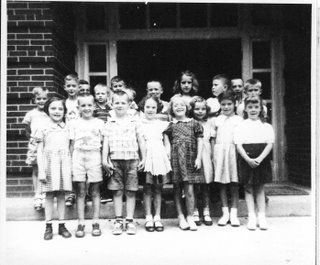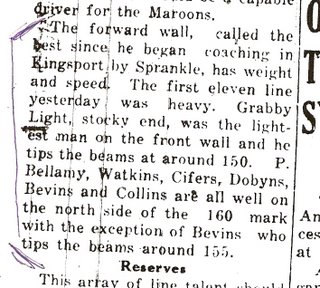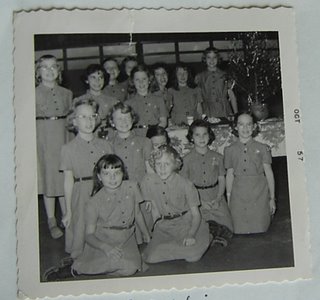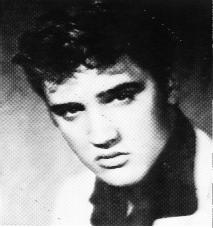Holston High Eagles - 1885-1968 - Gone but Not Forgotten
Here are scenes from the sixties. The pages are from the Holston High School yearbooks of 1964 and 1966, courtesy of Kay Speck and Jo Zimmerman.
Click and enlarge. And enjoy. You might even see a few folks you know.
There's Jo as the beauty queen and Richard Kitzmiller and a very young Mike Milhorn.
Holston opened in 1885 as Holston Institute. It was the little school out near the airport. The name changed to Holston High in 1960. The final class graduated in 1968 when Holston was absorbed by the new Sullivan Central.

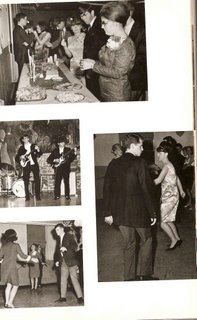




Kay Speck got this history of Holston from Sullivan County:
Holston Institute became a two-year high school in 1911. In 1915, the school organized a student government, which is thought to be the first such program in Sullivan County. The catalog for 1916 stated that the school was tuition free for all students in the Holston School District except "those branches not included in the State Public School course." A "supplementary term" was to be held with a nominal fee fixed by the school's board of trustees. This was an extension of the school year not covered by public school funds and was offered for those who could afford it, and wished their children to have additional educational advantages.
Cultural and social enrichment was emphasized through music and social clubs, such as, the Busy Bees. The school catalog declared that "the study of music trains the mind just as the study of any other science. Its bearing on the social and moral life is too great to allow it to be omitted."
A tin bucket and dipper was the first water system. It was a special privilege to be chosen for the "water bucket brigade" to carry water from the spring. When the water reached the schoolroom, thirsty students drank from a common dipper. The school's second water system was an improvement. The buckets of water were poured into large jars which were inverted so that a button could be pressed to get a cup of water. A small trough carried excess water to a waste bucket below this “bubbling fountain” as it was called. Drinking cups were hung on a wall nearby. Some students kept cups in their desks or carried collapsible ones in their pockets. The next water system was pumped through pipes into the building. The water pressure at the fountain was very unstable bringing a slow trickle or a sudden burst of water showering anyone close by.
In 1919, Holston Institute became a three-year high school. Another year was added in 1920, making that class the first to graduate with four years of study. There were nine graduates: Eva Yoakley, Nell Yoakley. Eva Hickam, Monnie Roller, Margaret Barnes, Dora Hull, Ina Cash, Eula King, and Mary Eva Gammon. All attended college and became teachers.
Holston has been called the "teacher factory" because of the high percentage of educators among the graduates, which includes principals, professors, superintendents, and other administrative personnel.
The sports program began at Holston with baseball. In the early years, baseball bats were ~often whittled from hickory or ash. Some balls were handmade by wrapping string into a ball. A lost ball could be reason for stopping a game. If balls were purchased, the players had to contribute to their purchase. Teachers were permitted to play on the school’s team, even in competition games, until the 1920s.
Basketball, the second sport, began in 1922 when the principal, Roy E. Clarke, supervised the building of an outdoor court. Excavation was made deep enough to place a layer of cinders, then sand with a thick layer of sawdust on top, and all was tightly compacted making a dust-free court.
It has been said that early education depended on three "R's": reading, 'riting, and 'rithmetic. Holston Institute added a fourth "R," namely religion. In 1923, the school yearbook “The Dawn” reported that on average, at least one minister or missionary had gone out each year from the graduating class. Morning devotions were a part of each day's curriculum. These so impressed A. M. Hamilton that sixty years later, he could recall a scripture, comments and prayers he heard while a student at Holston Institute.
In 1931, a brick building was erected and connected the two previous buildings. This section housed an auditorium which doubled as a gymnasium.
In 1941, a separate building was erected with a gymnasium and shop for woodworking and related classes. County funding was secured in four installments by T. D. Lacy, principal, and Perry Slaughter, chairman of the county school board, before the structure was completed. The rock wall along the front of the schoolyard was built by Mr. A. K. Wagner and NYA workers.
In 1954, the old concrete block building of 1911 was torn away, and rebuilt of brick to match the rest of the school building. This new section housed the elementary classes, the office and clinic.
The name Institute was considered an honor in 1886 because it designated a school of higher learning. By 1960, the name was not appreciated or considered appropriate by the student body, so a drive was made to eliminate that part of the school's name. Thus it became known as Holston High and Elementary School.
In 1968, with the completion of Central High School, Holston High became Holston Junior High School. In 1979, when Central absorbed grades nine through twelve, the name was changed to Holston Middle School.
In Sullivan County, 1979 was a year for much activity in renovating or building new schools. Much of the Holston building was condemned as a fire hazard. Because of its location near the Tri-City Airport, it was decided to move to a new location rather than take the necessary measures to make the present building safe for students. A desirable location was secured from E. B. Sanders and plans for a duplex building were chosen. School would occupy one wing and Holston Elementary would be in the other. They would share the lunchroom and gymnasium. The elementary school moved to the new building in September 1979 and the middle school made the transfer from the old building in January 1980. The new building was equipped with solar panels to provide supplementary heat. This was the first experiment with solar energy in the construction of a school Tennessee.
Obtained from the Records Department, Holston Warehouse, Blountville
